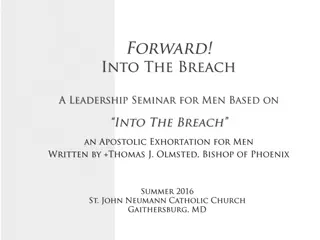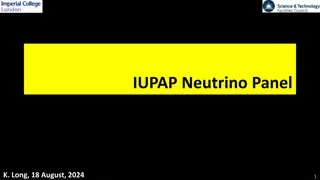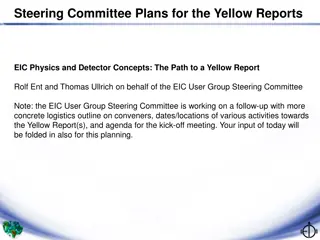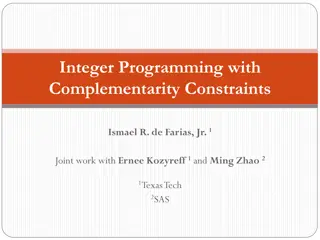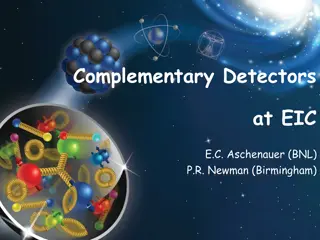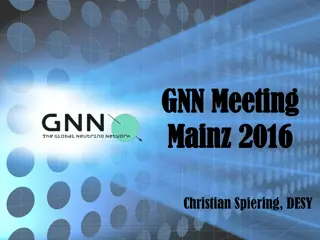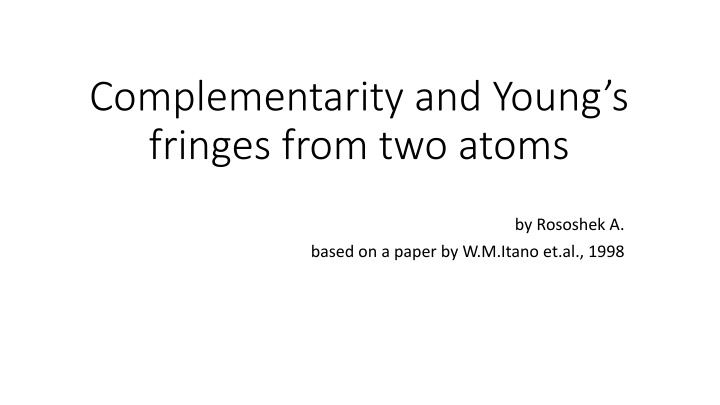
Complementarity and Young's Fringes in Quantum Mechanics
Explore the fascinating study of complementarity and Young's fringes in quantum mechanics based on research by Rososhek A. and W. M. Itano et al. Discover the principles of quantum mechanics, experimental setups, models, and discussions surrounding this controversial topic.
Download Presentation

Please find below an Image/Link to download the presentation.
The content on the website is provided AS IS for your information and personal use only. It may not be sold, licensed, or shared on other websites without obtaining consent from the author. If you encounter any issues during the download, it is possible that the publisher has removed the file from their server.
You are allowed to download the files provided on this website for personal or commercial use, subject to the condition that they are used lawfully. All files are the property of their respective owners.
The content on the website is provided AS IS for your information and personal use only. It may not be sold, licensed, or shared on other websites without obtaining consent from the author.
E N D
Presentation Transcript
Complementarity and Youngs fringes from two atoms by Rososhek A. based on a paper by W.M.Itano et.al., 1998
Outline Introduction Experimental setup The model Discussion Conclusions
Principle of complementarity requires that it is impossible to observe particle-like and wave-like behavior simultaneously Heisenberg s uncertainty principle ???? 2
Motivation New gedanken experiment was proposed by M.Scully et al. (1991) in which it was shown that interference pattern can be destroyed w/o momentum transfer from the detector to the particle Polder et al.(1976) showed that the spontaneous emission from a 2-level system(198Hg atom, j=1/2 to j=1/2 transition) can include a coherent component Controversy in the understanding of the basic principles of quantum mechanics such as the complementarity principle and the uncertainty principle
Youngs experiment with two 198Hg+ ions Continuous image was provided by D1 and intensity was measured with D2 Laser frequency is assumed to be nearly resonant with transition in the ion, by such including only one intermediate electronic state Dipole-dipole interaction is neglected due to many wavelength separation (3 to 9 m) between the ions Detection is frequency insensitive
Model Hamiltonian of the system 2 2 ?2 ?? 2?+1 2+ ?? 2+ ?? 2 ?? ? ??,? 2?? 2?? ? = 2? ?? + 4??0|?1 ?2| ?=1 ?? 2?0??? ??exp ??? ?? ?? ??exp ??? ?? ? ??,? = ???Re?0exp ? ??? ?? ???? + ? ? eigenstates of the system |?? = | ?, |?? = | ?, |?? = | ?, 1 21, ?, 1 21, ?, 1 21, ?, 1 22, ??? ? 1 22, ??? ? 1 22, ??? ? It can be shown that the resulting spectrum of the scattered light is discrete
Assumptions The given system can be considered as a 2-level system since the probability for the 6?2? 1 2 level to decay radiatively to the 5?96?22? 3 2 level is negligible The Zeeman precession frequency is much lower than the scattering frequency by such it doesn t affect the analysis Dipole approximation The intensity of a laser is assumed to be low enough in order for the probability to excite both atoms simultaneously is negligible and stimulated emission can be neglected
Cross-section for scattering the photon 2 ??| ?1 ????exp ??????1|?? ??|| ?1 ???exp ?????1||?? ?0 ???+ ?? ?? + ? ? 2 ?? ? = ?1 | | ????? ??| ?2 ????exp ??????2|?? ??|| ?2 ???exp ?????2||?? ?0 ???+ ?? ?? + ? ? 2 ? ? Ei,j energy of the initial/intermediate state ?0 transition frequency for ?? ?? - outgoing photon s frequency R1,2 position of the ion ???? 16?2?4 2?0 ? |? |? ????= ??? 3 ?1 2 3 ?0 6??0 ?3| ?|?|? |2 - the spontaneous decay rate of the excited state ??= cos?cos?, cos?sin?,sin? ??= sin?,cos?,0
mJconst mJ=const ?? ????? =sin2? 4? ?? 1 2 ? ?1 ?2 = 8??0 ??? ?0 1 + cos ? ? exp ?0 ??? ?0 ????? 2 d distance between the ions u1,2 equilibrium position of the ion ? ??? ???? ?0 2??2 ?0 2- resonance cross section ? 22 2+ ??? ?0 ? 22 ??? ?0 | ??? ? initial states stands for thermal average over a thermal distribution of
Which-path interpretation m= 1 m=0
Fringe visibility fringe visibility is contained in the exponential term =sin2? 4? 2 ?? ? ?1 ?2 1 + cos ? ? exp ?0 ??? ?0 ????? 2 In the limit of small thermal motion or small q the visibility can approach 100% Polarization insensitive detection bounds the visibility by 50% Detection of light with ?? polarization provides up to 100% visibility
Controversy of the interpretation The presence itself of which-way detectors enforces complementarity (Englert, Scully, Walther). It is possible to destroy an interference pattern without transferring any transverse momentum The detector transfers momentum to the particle meaning that Heisenberg s uncertainty relation enforces complementarity(Storey, Collett, Walls). It is impossible to destroy an interference pattern without transferring momentum
Criticism Wiseman et al. (1996) have shown that in all instances the destruction of interference pattern is associated with a disturbance(by the detector) of the particle s momentum in the order of ?, but it hasn t to be local(at the slit location) by such demonstrating a similarity to the Aharonov-Bohm effect
Conclusions Wave and particle properties of light are complementary and hence can t be observed at the same time Which-way detection always destroys the interference pattern The way in which the reduction of the wavefunction occurs remain uncertain


